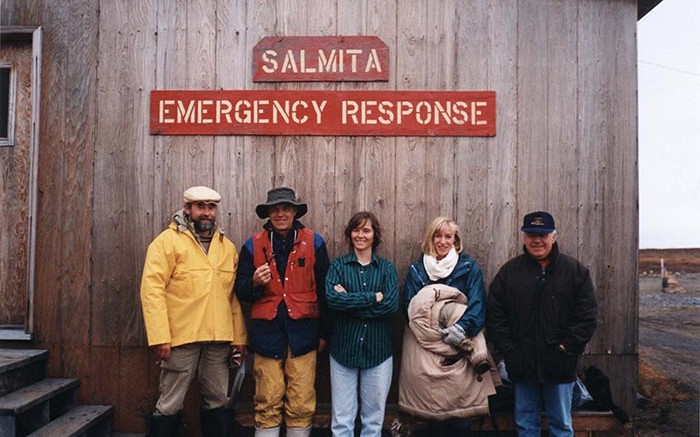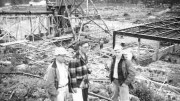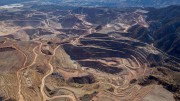The following is an edited transcript of a speech given by Randy Turner on the occasion of the 25th Anniversary of the Mineral Deposit Research Institute in April, telling the tale behind Winspear’s discovery of the Snap Lake diamond mine in the Northwest Territories. Turner was the CEO of Winspear Diamonds and is now president and CEO of Canterra Minerals.
After Eskay Creek and Hemlo were found in 1989 the industry was dead. Most people were out of a job, the oil companies had got out of the mining business, and all the juniors were hanging onto their shells getting ready for a dark winter.
But then a little known company called Dia Met Minerals and BHP put out a press release in November 1991 stating they recovered 81 diamonds from 59 kilograms of kimberlite at the Point Lake project in the Northwest Territories. It was Canada’s first significant diamond discovery.
Within an instant this one press release turned everything around. Diamonds rocketed to $226,800 per pound and during that first year, 125,000 claim posts were staked, and 300 companies along with countless prospectors flushed into Canada’s north.
Those marching to the drum were proclaiming themselves as “diamond experts”, but this was just a façade. Nobody knew anything about diamonds – they never worked with them before. I was getting calls from people asking if we were going after “timberlites” and heard a broker mispronounce the Slave Craton — an Archean province that hosts kimberlites — as the Slave “Crouton”.
Around that time I acquired a company called Winspear, and hired John McDonald, a former director and professor at the Mineral Deposit Research Unit at the University of British Columbia, to help with starting up some projects.
In all his academic wisdom, John insisted that we bring in a top geoscientist from Russia to meet with us in Vancouver and teach us how to explore for diamonds.
We weren’t sure if he spoke good English, so we sat by these big windows in the Pan Pacific Hotel’s restaurant and figured we could gaze out onto the harbour in case conversation fell a little flat. But the Russian got so excited talking about the potential for diamonds in Canada you couldn’t quiet him down. Before long, heads began to turn and everybody in the restaurant was listening in on our conversation.
So the day after meeting our overseas friend, I get an enthusiastic call from a broker saying, “Turner, I heard you’re doing a deal with Russia!”
Apparently, we were out looking for timberlites in croutons, and making deals with Russian spies. It was a time when everyone had their eye on the other guy, and they all wanted in on the game but weren’t exactly sure how to play it.
By 1996 the momentum in the diamond industry was really building, and diamond explorers were starting to make some real discoveries like Ekati and Diavik in the Northwest Territories.
That same year we discovered some diamondiferous boulders around Snap Lake. I was actually in the Lions Gate Hospital in Vancouver when John put out his first press release about it. I’m lying in the hospital bed, looking at the ticker tape and I see Winspear just rocketing through the roof. I nearly fell over thinking, “gosh, John’s not only a professor but he’s a promoter too!”
But then Bre-X was announced as a scam in 1997 and the news wiped the whole industry out. Fortunately for us, we had closed a $10 million financing three days before so we were one of the few that managed to continue on exploring while that dust settled.
We received our first surface bulk sample analysis from the project in 1998 and John called me with the results. I’ll never forget his voice on the phone that day: “Turner, I have good and bad news. The good news is we’ve recovered a 10, an 8 and 6 carat diamond.”
So I asked, “Well, what’s the bad news, John?”
And he replied, “Nobody’s going to believe us.”
And wouldn’t you know it but he was right. A couple of days later there was a rumour on the street that we salted our sample, and since we had Russian geologists on staff, we must’ve used Russian diamonds to do it. We didn’t know whether to laugh or cry because it was just so unbelievable.
But we got through all that and by the year 2000 we knew we had a big deposit on our hands. So John and I went looking for potential financing from a diamond mogul in Tel Aviv. We had a government gentleman who joined us, really nice guy, but he stands out in my memory because of these thick glasses he wore that were almost identical to Mr. Magoo’s.
So we meet with this potential financer in Tel Aviv, and he’s like, one of the most powerful men in the diamond game. So we have our chat, but when we turn to leave Mr. Magoo walks into this big glass statue and the whole thing falls and smashes into a thousand pieces on the ground. Suddenly the doors open up and two guards come running in with guns and all I can hear is John behind me saying, “Oh thank god Turner, it wasn’t you!”
We arrived back in Vancouver and it wasn’t long before the president of De Beers came knocking on my door. I thought he was there to see my mineral collection since we were both enthused collectors but turns out it was the beginning of a hostile take-over.
Fifty six days later De Beers bought Winspear for $305 million, Snap Lake entered production in 2008 and the rest is Canadian history.
Editor-in-chief’s note: From time to time our long-time readers request that we “bring back the ‘Odds ‘n’ Sods’ columns” which are first-hand, light-hearted remembrances of mining and exploration tales submitted by readers who are often retired from the industry. Well, we never stopped running them — they have only become less frequent due to fewer submissions by readers. So by all means, if you have a funny or poignant story to tell, please send it to the editor-in-chief at tnm@northernminer.com.






Be the first to comment on "Odds ‘n’ Sods: Timberlites and croutons – the early days of the Great Canadian Diamond Rush"